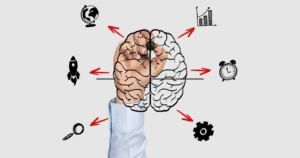A couple of years ago, I worked with a brilliant client with a unique and sought-after skill-set. She had a strong reputation within her organization and the latitude to focus on interesting work. She just had one teeny, tiny, eensy, weensy problem.
She was so focused on people-pleasing and not making waves that the words “No.” or “Can I get back to you?” weren’t in her vocabulary.
She reminded me of one of those machines that rapidly fires baseballs at you during batting practice. Before you have time to think, the next ball is hurtling toward you at 90 mph.
Her brain was saying “No! No! No!” but her mouth was rapidly firing “Yes! Yes! Yes!” to any and all requests that came her way.
You can guess where this is going.
Yup. Burn out.
She was overwhelmed with the volume of work, exhausted from working nights and weekends to try and keep up, spending less time with her family, and she struggled to find any time for her own hobbies and interests. Resentment started to build.
The longer this went on, the more she questioned her contribution. It’s hard to feel good about your work when you’re overwhelmed and exhausted.
So, what changed?
Well, for one, I started coaching her, so there’s that. 🙂
Through coaching, she gained insight into why she was saying “Yes!” instead of “No.” or “Can it wait?”
Here’s what she uncovered:
- She had almost no boundaries
- Everyone else’s needs took priority over hers
- She wasn’t valuing her contribution as much as others did
Armed with this information, she began to make small changes. The more she repeated the changes, the more she strengthened new neural pathways in her brain. Over time, those small shifts became second nature to her and yielded big results.
Specifically, she:
- Tapped into the “power of the pause” and gave herself permission not to respond immediately to requests
- Leveraged her natural curiosity to ask questions and gather more information so she could offer an intentional and well-thought-out response to requests
- Set expectations with stakeholders by clearly stating what she could (or couldn’t!) do and provided realistic timeframes for completion
In her own words, “It’s helped me make a more sustained and meaningful impact in my work.”
Fast forward to today, and she’s crushing it.
She started her own business, and the strategies she put into place back then continue to support her in her new venture today.
People, like my client, are often under the misconception that change needs to be made in big, bold, sweeping moves. Similar to achieving big goals, behavior change is best accomplished by breaking it down into smaller components.
Does this sound like you?
If something’s not working for you right now, identify the two to three small shifts you could make that would have an appreciable difference in outcomes. Then practice those new behaviors. You may be surprised at the outcomes!





